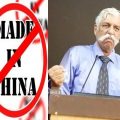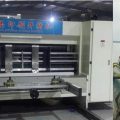Why Commodities’ Futures Trading Successful in US, Brazil, but Failure in India

Commodity exchanges can contribute to market development by reducing transactions costs, improving price discovery, and reducing price risks by providing three key services to the participants- (i) improving price discovery, (ii) increasing market liquidity, and (iii) helping price risk management.
Since 2003 when the future trading was permitted on the national commodity exchanges in India, two exchanges had gained the share of trades. NCDEX is leader in Agri Commodities and MCX in precious and industrial metals.
Till 2013, the average daily turnover reached almost Rs 70000 crores. Thereafter the volumes drooped massively. Currently the corresponding figure is languishing at around Rs 30000 crore.
Even the peak figure of Rs 7000 crore does not justify the preeminence that India has in commodities as large producer, processor or consumer of Commodities. We have remained as Price Taker and not as price setter. The Exchanges in Brazil, Malaysia , China and US are the global leaders and price setter in the commodity derivatives.
A commodity exchange requires 3 Ps for becoming the leader- Product, Participants and Policies. Herein lays the difference in Commodity Derivative Ecosystem in India on one hand and US, BARZIL, Malaysia and China on the other hand.
Product and underlying commodity specific conditions: Other country jurisdictions have certain flagship products as in case of Brazil and Malaysia or they only launch those products that are strongly linked to its underlying industrial sectors as in case of China. Brazil (BM&F Exchange) has Coffee, Cattle, corn, cotton, sugar, ethanol as main commodities. Higher trading volume in these commodities is linked to long-run equilibrium relationships between cash and futures prices and greater integration between the spot and futures market. Similar is the case in Malaysia ( Bursa Exchange) that has Palm Oil as flagship product. Chinese exchanges are among the top five globally. Out of the top 15 futures contracts in the world, nine are traded on Chinese exchanges.
The financing of commodities market is facilitated by efficient linkage between warehouses and banks, including the use of fintech to ensure the integrity of warehouse receipts. The Chinese exchanges do not compete for order flow by launching products on the same underlying and fragmentation of liquidity does not occur.
India is also making progress due to efforts of SEBI that was vested with the task of regulating the commodity derivatives in 2015 and since then have allowed the launch of indices, options and slew of other products. Recently SEBI has also mooted the idea of One Commodity One Exchange and the core idea is that Exchanges develop unique set of commodities and the liquidity does not get fragmented. On another front , Utilizing key advantage of ENWR ( e- Negotiable Warehouse Receipts) , farmers and various stakeholders will get easy access to bank finance facility. With ENWR under their possession, the value chain participants are using the Exchange warehouses even after Exchange Deliverable Date (EDD) under Warehousing Development and Regulatory Authority(WDRA) framework in agriculture commodities. The regulation of warehouses of Non Agriculture is still under discussion, though.
Participants : The retail participation in commodity derivatives China is high. Chinese Exchanges also encourage the development of such contracts that suit retail participation. Contracts traded in China suit the retail appetite with smaller lot sizes. The lot sizes are only a fraction of that employed in the international exchanges. Although on the negative side, The retail trading has also been aided by high leverage through grey market loans and online borrowing.
Participation of State Trading Enterprises for example China National Cereals, Oils and Foodstuffs Corporation (COFCO) Futures Group in China, state owned food processing holding company and is the largest food processor, manufacturer and trader in China. Participation of state enterprises like COFCO in futures market instills positive sentiments and reliability among other players in the market.
Policies & Cost of transaction: The round-trip cost of non-delivery based proprietary trading in non-agricultural commodities is in the range of 31-99 per cent of the cost of trading the same commodity in India. Ever since CTT was introduced in India in 2013, the volumes on Commodity Exchanges has slid considerably.
Another factor. The risk management needs of Chinese firms are mostly met within the domestic market through restrictions on the state-owned and private enterprises in hedging in international markets. Chinese experience shows that state-support to firms until the market reaches sufficient liquidity for their hedging needs eventually creates domestic demand for hedging. In India also, the volumes in Gold increased after RBI removed gold from the list of eligible commodities whose price risk could be hedged overseas.
Featured image courtesy: CNBCTV18.
Disclaimer: The views expressed here are solely of the author. My India My Glory does not assume any responsibility for the validity or information or images shared in this article by the author.
Note: The author of this article, Mr. Narinder Wadhwa is an active member of several industry bodies and is a member of the National Executive Committee of FICCI, ASSOCHAM, and CPAI. He is also a chairman of National Council for Capital Market, ASSOCHAM and President of CPAI,He was also chairman & Director of Anmi and recently represented India in ASF and Iosco meet in Tokyo. Mr. Narinder Wadhwa was conferred the ‘Pride of India Gold Award’ by the President of Mauritius at the NRI Summit in Mauritius and ‘Global Indian Award’ by the Bank of Doha in Qatarand recently “Times Now “Global leaders award in Dubai .






